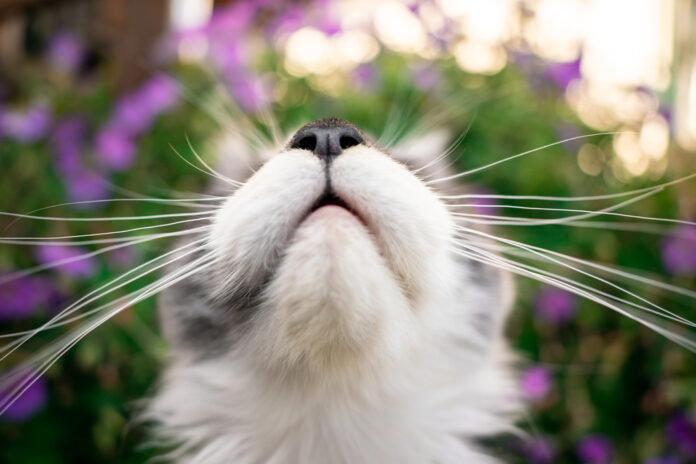Hairballs and gut health in your cat

Cat’s tongues are covered in hundreds of tiny scoop-shaped spines, called
papillae. These spines function like a built-in comb when cats groom themselves. So it’s normal for cats to ingest their fur while cleaning themselves. The fur typically passes through the digestive system and is
eliminated in the stool. Sometimes, however, ingested fur accumulates in the
stomach and is regurgitated as one big clump — a hairball.
Also called trichobezoars, hairballs a couple times a year are normal. Cats with frequent and regular hairballs may have an underlying health problem related to the digestive tract. Here we discuss the connection between hairballs and the microorganisms that line the digestive tract, and what cat parents can do about a hairball problem.
HAIRBALLS AND YOUR CAT’S GUT MICROBIOME
The gut microbiome refers to the community of bacteria and other microbes that live throughout a cat’s intestines. The health of this community plays a role in nearly every aspect of your cat’s health, from nutrient absorption to
immune system function.
Excessive hairballs could be a sign of impaired gut motility (the digestive system’s speed and ability to move material along). Reduced motility can affect the microbiome by interfering with nutrient absorption and causing
bacterial overgrowth; scientists have found many ways that the microbiome
can influence motility too. The relationship can be simple — such as the generation of mucus for food and other matter to move easily through the
intestinal tract. It can also be complex; for example, beneficial gut bacteria
produce short-chain fatty acids, which are important for regulating intestinal
motility. When the gut microbiome becomes unbalanced, a cat may experience reduced gut motility.
Reduced gut motility can be dangerous. If hair accumulates in the digestive tract faster than it can be processed, it can create a life-threatening blockage that requires surgical intervention.
WHY CATS OVERGROOM
Grooming is a normal, self-soothing feline behavior, but overgrooming is often seen in cats with itchy skin from allergies, food sensitivities, or other skin conditions. Excessive grooming can cause hairballs because the cat is
ingesting more fur than the digestive system can handle.
Your cat’s gut microbiome plays an important role in his/her immune system function because 70% of immune cells are located in the gut. A cat’s immune system may not work properly when the gut microbiome is imbalanced, causing overreactions to the environment or dietary ingredients. This can manifest as itchy skin, which cats respond to by overgrooming.
WHAT YOU CAN DO
There are many ways you can help prevent hairballs. Regular brushing
helps remove loose hair that would otherwise be ingested by the cat, especially for long-haired or older felines with reduced grooming abilities. It’s important to talk to your veterinarian about how to best support a healthy and
balanced gut microbiome in your cat.
To learn more about your pet’s gut health visit AnimalBiome.com.
AUTHOR PROFILE
Katie Dahlhausen, PhD
Katherine Dahlhausen, PhD, is a science writer for AnimalBiome. She was mentored by Holly Ganz during the beginning of her PhD at University of California Davis and helped with the very beginning of the KittyBiome project. Katherine has worked on a wide variety of microbiome-related projects to date, including ones about koalas, buildings, pollinators, and coral reefs. In her free time, she enjoys scuba diving, hiking, and cooking.



